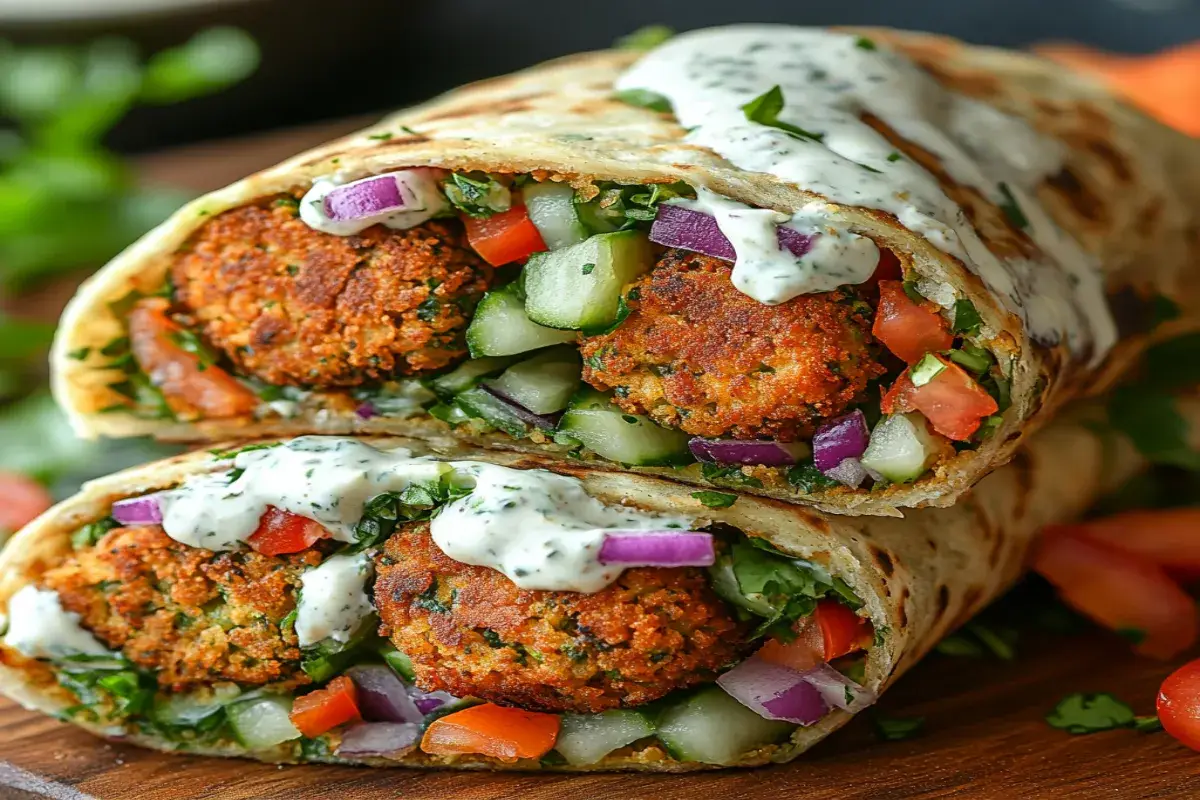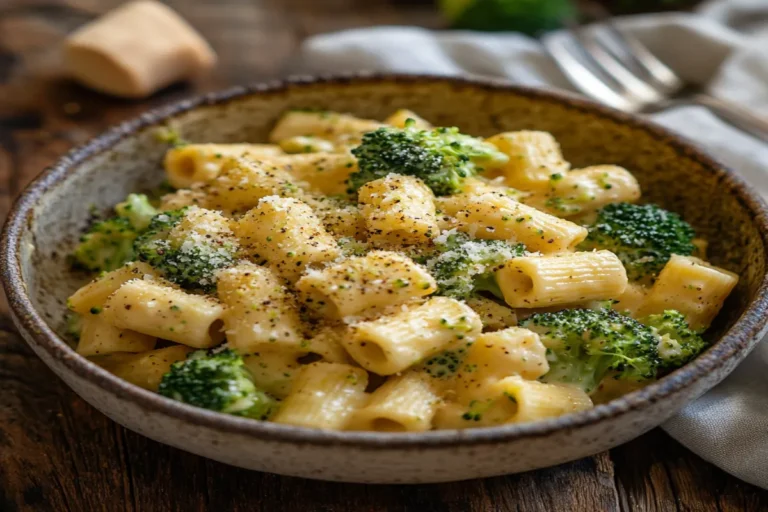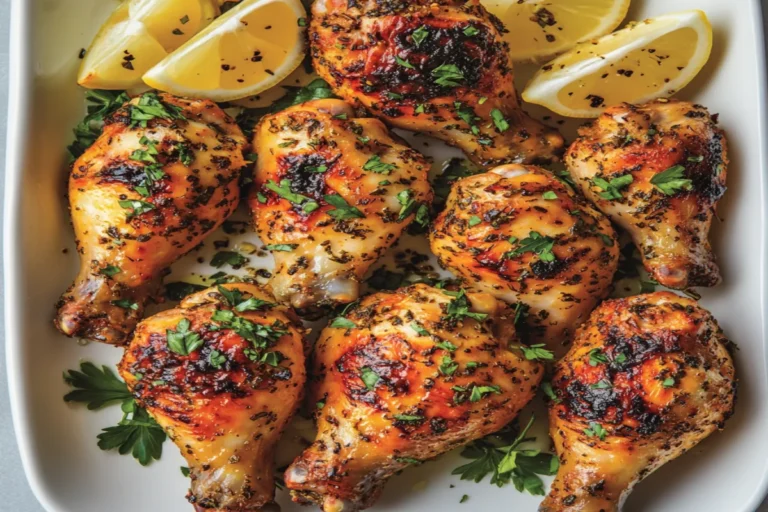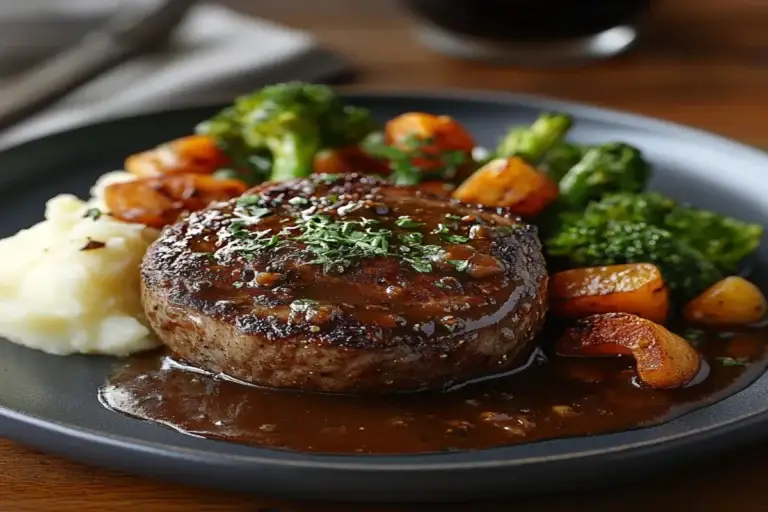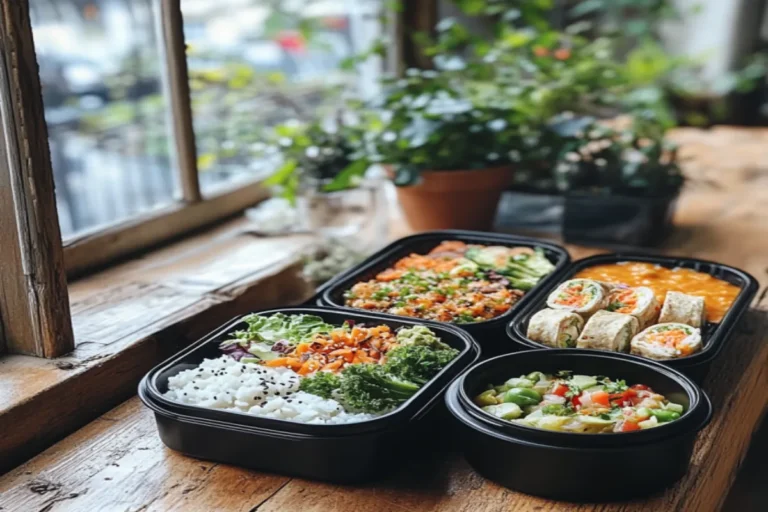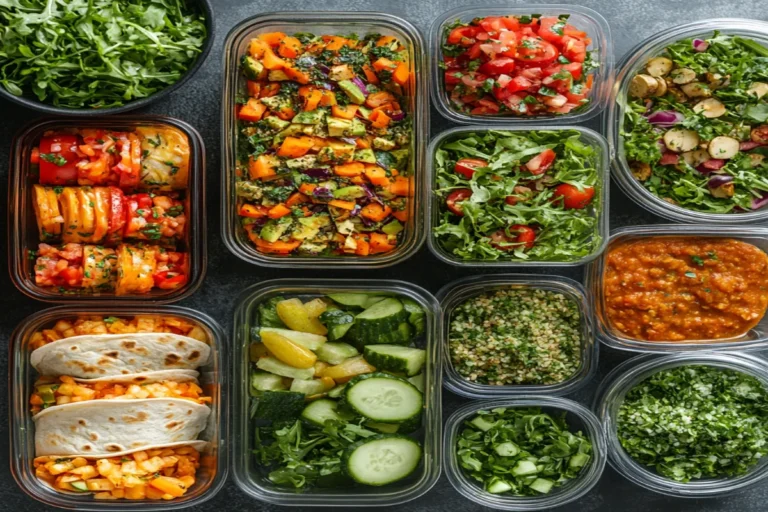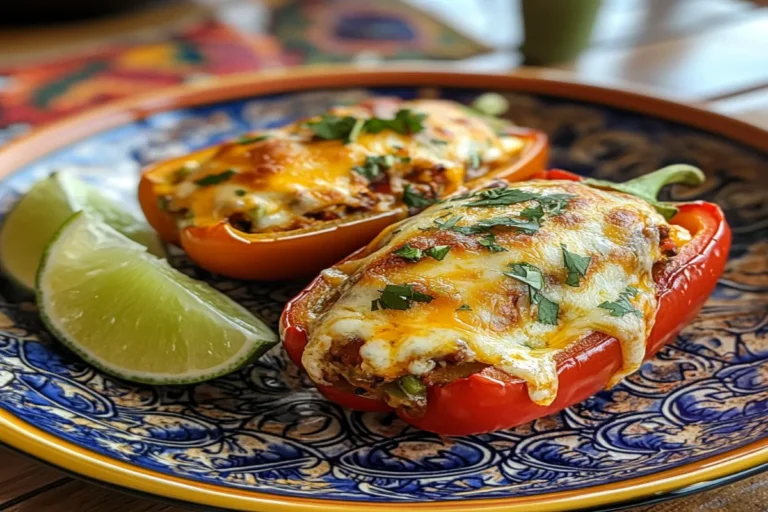Falafel Wraps with Creamy Tahini and Crunchy Veggies Recipe
Picture this: you’re craving something satisfying, flavorful, and nutritious for lunch, but you want to skip the heavy, meat-laden options that leave you feeling sluggish all afternoon. Enter the magnificent falafel wrap – a Mediterranean masterpiece that delivers crispy, herb-infused chickpea fritters nestled in soft flatbread with an array of fresh vegetables and silky tahini sauce. This isn’t just another plant-based meal; it’s a complete sensory experience that transforms simple ingredients into something extraordinary.
The beauty of falafel wraps lies in their perfect balance of textures and flavors. Each bite offers the satisfying crunch of golden falafel against the cool crispness of fresh cucumbers and lettuce, all brought together by the rich, nutty creaminess of homemade tahini sauce. Whether you’re a devoted vegetarian, someone exploring plant-based options, or simply a food lover seeking new flavors, this wrap represents everything wonderful about Middle Eastern cuisine wrapped up in one convenient, handheld package.
Table of Contents
The Allure of Falafel Wraps
Cultural Significance and Timeless Appeal
Falafel has been nourishing people across the Middle East for centuries, with both Egypt and the Levantine region claiming its origins. This beloved dish emerged from the practical need to create protein-rich, satisfying meals using readily available legumes. Ancient Egyptians are believed to have created an early version using fava beans during Coptic fasting periods, while Lebanese, Syrian, and Palestinian communities developed the chickpea-based varieties we know today.
What makes falafel culturally significant extends beyond its ingredients. It represents the ingenious ways traditional cuisines maximized nutrition and flavor from simple, plant-based ingredients long before “superfood” became a marketing term. In bustling Middle Eastern markets, street vendors have been perfecting their falafel recipes for generations, each family guarding their unique blend of spices and preparation techniques.
The transformation of falafel from regional street food to global phenomenon speaks to its universal appeal. When wrapped in soft pita or laffa bread and paired with fresh vegetables and creamy sauces, falafel becomes more than sustenance – it becomes a celebration of how simple ingredients, when treated with respect and creativity, can create something truly magical.
Health Benefits That Matter
From a nutritional standpoint, falafel wraps offer remarkable benefits that align perfectly with modern health consciousness. Chickpeas, the star ingredient, provide substantial plant-based protein along with complex carbohydrates that deliver sustained energy without the afternoon crash associated with processed foods. A single serving of chickpeas contains approximately 15 grams of protein and 12 grams of fiber, making falafel an excellent choice for maintaining stable blood sugar levels throughout the day.
The herbs traditionally used in falafel – parsley, cilantro, and mint – aren’t just flavor enhancers; they’re nutritional powerhouses packed with vitamins A, C, and K, plus essential minerals like iron and folate. These fresh herbs also contain antioxidants that support overall health and add vibrant color to your meal.
Fresh vegetables in the wrap contribute additional vitamins, minerals, and fiber while keeping calorie density low. Cucumbers provide hydration and vitamin K, tomatoes offer lycopene and vitamin C, and leafy greens supply folate and iron. The tahini sauce, made from ground sesame seeds, contributes healthy fats, calcium, and magnesium – nutrients often lacking in typical lunch options.
This combination creates a meal that satisfies hunger, supports sustained energy, and provides essential nutrients your body craves. Unlike processed lunch options that leave you reaching for snacks an hour later, a well-made falafel wrap keeps you satisfied and energized throughout the afternoon.
Ingredients Overview
The Foundation: Perfect Falafel
Creating exceptional falafel starts with quality dried chickpeas that have been soaked overnight until they’ve doubled in size and become tender enough to break apart easily. Never use canned chickpeas for homemade falafel – they contain too much moisture and will result in fritters that fall apart during cooking. The soaking process is crucial because it allows the chickpeas to achieve the proper texture when ground.
Fresh herbs form the aromatic heart of great falafel. Traditional recipes call for generous amounts of flat-leaf parsley and cilantro, with some variations including fresh mint or dill. These herbs should be washed thoroughly, completely dried, and roughly chopped before being added to the food processor. The ratio typically favors parsley, with cilantro providing a bright, citrusy note that balances the earthy chickpeas.
Aromatic spices complete the flavor profile. Ground cumin adds warmth and depth, while coriander provides a subtle citrusy note. Fresh garlic cloves contribute pungency, and a small amount of cayenne pepper or hot paprika adds gentle heat. Some recipes include a pinch of baking powder to help achieve extra lightness, though traditional versions rely solely on proper technique for texture.
Choosing the Right Wrap
The choice of bread significantly impacts your falafel wrap experience. Laffa bread, a soft, chewy Iraqi flatbread, provides the ideal canvas for falafel wraps. Its large size and pliable texture make it perfect for wrapping substantial fillings without tearing. When unavailable, pita bread works well, though you’ll want to warm it slightly to improve flexibility.
For those avoiding gluten, corn tortillas or gluten-free wraps serve as excellent alternatives, though they’ll create a different flavor profile. The key is selecting a wrap that’s large enough to contain your fillings comfortably while remaining sturdy enough not to fall apart when handled.
Crafting the Perfect Tahini Sauce
Tahini sauce transforms good falafel wraps into extraordinary ones. Quality tahini – pure ground sesame paste – serves as the foundation. Look for tahini that’s smooth and creamy rather than separated or grainy. The best versions come from Middle Eastern markets or specialty stores where turnover ensures freshness.
The magic happens when you slowly whisk water into tahini, creating an emulsion that becomes lighter and creamier with each addition. Fresh lemon juice brightens the nutty richness while minced garlic adds pungent depth. A pinch of salt enhances all the flavors, and some cooks add a touch of ground cumin or sumac for additional complexity.
The consistency should flow easily but not be watery – think of it as slightly thicker than heavy cream. Getting this balance right requires patience, as rushing the process can result in a sauce that’s either too thick or too thin.
Fresh Vegetables That Make the Difference
The vegetable selection in your falafel wrap provides crucial textural contrast and fresh flavors that prevent the wrap from becoming heavy or monotonous. Crisp romaine lettuce or butter lettuce adds satisfying crunch, while ripe tomatoes contribute juiciness and acidity that balances the rich falafel and tahini.
Persian cucumbers, with their thin skins and minimal seeds, slice beautifully and provide cooling freshness. If using regular cucumbers, consider peeling and seeding them to prevent excess moisture from making your wrap soggy. Thinly sliced red onion adds sharp bite, though soaking the slices in cold water for ten minutes removes some pungency for those who prefer milder flavors.
Pickled vegetables elevate falafel wraps to restaurant quality. Middle Eastern pickled turnips, with their beautiful pink color and tangy crunch, are traditional favorites. Pickled cucumbers or onions work equally well, providing acidic brightness that cuts through rich flavors while adding textural interest.
Step-by-Step Preparation
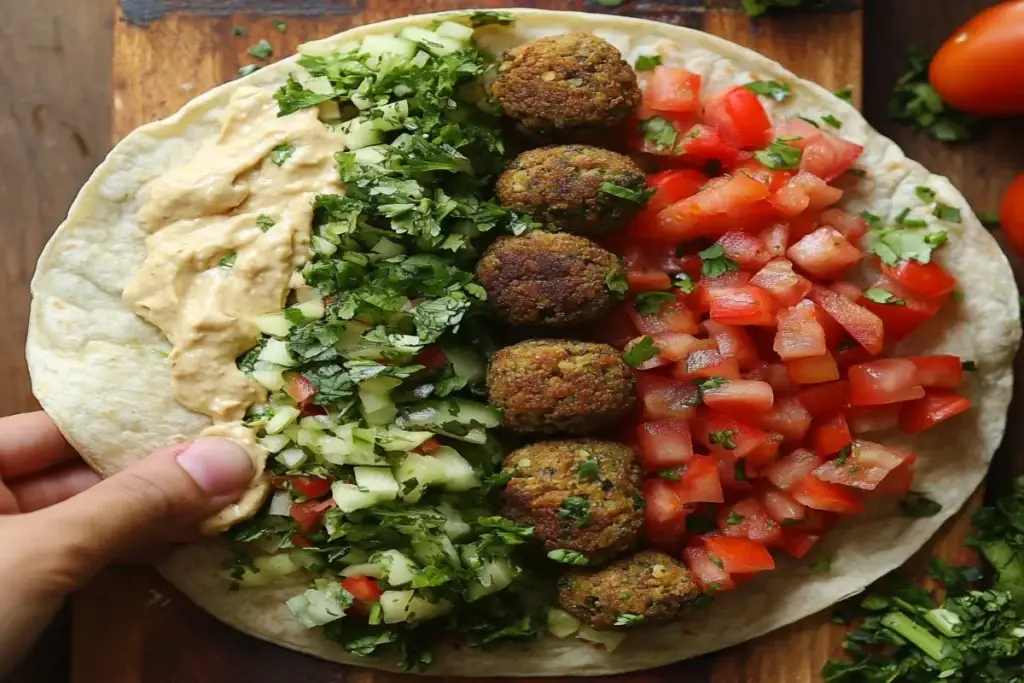
Mastering Homemade Falafel
Begin your falafel journey the night before by placing dried chickpeas in a large bowl and covering them with several inches of cool water. The chickpeas will absorb significant amounts of water and expand considerably, so use a bowl larger than you think necessary. After 12-24 hours of soaking, drain and rinse the chickpeas thoroughly.
In a food processor, combine the soaked chickpeas with roughly chopped fresh herbs, peeled garlic cloves, and your selected spices. Pulse the mixture rather than running the processor continuously, scraping down the sides frequently to ensure even processing. The texture you’re aiming for resembles coarse breadcrumbs – not smooth paste, but not chunky either. Properly processed falafel mixture should hold together when squeezed but still have visible texture.
Transfer the mixture to a bowl and refrigerate for at least one hour. This chilling period allows the flavors to meld while the mixture firms up, making it easier to shape. Using damp hands or a small ice cream scoop, form the mixture into balls or slightly flattened patties about the size of ping pong balls.
For frying, heat neutral oil to 350°F in a heavy-bottomed pot or deep fryer. Carefully lower the falafel into the hot oil, working in batches to avoid overcrowding. Fry for 3-4 minutes until deep golden brown and crispy outside. Remove with a slotted spoon and drain on paper towels.
Baking offers a healthier alternative that still produces delicious results. Preheat your oven to 400°F and line a baking sheet with parchment paper. Lightly brush the formed falafel with oil and bake for 25-30 minutes, turning once halfway through, until golden brown and crispy outside.
Creating Silky Tahini Sauce
Making restaurant-quality tahini sauce requires patience and the right technique. Start with room temperature tahini in a medium bowl. Using a whisk, gradually add cold water one tablespoon at a time, whisking constantly. The mixture will initially seize up and become thick, but continue adding water slowly while whisking vigorously.
After adding about four tablespoons of water, the mixture should begin transforming into a smooth, creamy sauce. Continue adding water until you achieve your desired consistency – it should coat the back of a spoon but flow easily. Whisk in fresh lemon juice, minced garlic, and salt, tasting and adjusting as needed.
The sauce should taste bright and balanced, with the nuttiness of tahini complemented by the acidity of lemon and the pungency of garlic. If the sauce becomes too thin, let it sit for a few minutes to thicken naturally, or whisk in additional tahini. If too thick, add water one teaspoon at a time.
Assembly Artistry
Proper assembly ensures your falafel wrap stays together and delivers the perfect bite every time. Begin by warming your flatbread briefly in a dry skillet or microwave until it becomes pliable. Lay the warmed bread on a clean work surface and spread a generous layer of tahini sauce down the center, leaving about two inches on each side.
Arrange your falafel in a line down the center of the sauce, gently pressing them into the bread to create stability. Layer your fresh vegetables strategically – lettuce and herbs first to create a barrier that prevents soggy bread, followed by tomatoes, cucumbers, and pickled vegetables. Drizzle additional tahini sauce over the vegetables.
To wrap properly, fold the bottom edge of the bread up and over the filling, then fold in the sides before rolling tightly from bottom to top. The key is maintaining even pressure while rolling to prevent gaps or loose spots. If your wrap seems overstuffed, remove some filling rather than struggling with a wrap that won’t stay closed.
For the cleanest eating experience, wrap the bottom half of your assembled wrap in parchment paper or foil. This creates a convenient handle and prevents ingredients from falling out as you eat.
Tips for the Perfect Falafel Wrap
Achieving Optimal Texture
The contrast between crispy falafel and fresh vegetables creates the textural appeal that makes falafel wraps irresistible. To ensure your falafel achieves maximum crispiness, avoid overcrowding when frying and maintain proper oil temperature. If the oil is too cool, the falafel will absorb excess oil and become greasy rather than crispy. Too hot, and the outside burns before the inside cooks through.
When baking falafel, resist the urge to flip them too early. Let them develop a golden crust on the bottom before turning, and avoid moving them around the pan unnecessarily. A light coating of oil helps achieve browning, but too much will make them greasy.
Keep vegetables crisp by storing them properly and preparing them just before assembly. Wash and thoroughly dry lettuce and herbs, storing them in the refrigerator wrapped in paper towels. Cut tomatoes and cucumbers shortly before serving to prevent them from releasing excess moisture.
Flavor Enhancement Techniques
While traditional falafel wraps are delicious on their own, small additions can elevate them to restaurant quality. Pickled red onions add tangy crunch and beautiful color – simply slice red onions thinly and marinate them in rice vinegar with a pinch of sugar and salt for at least 30 minutes.
A drizzle of high-quality hot sauce or harissa paste adds welcome heat for those who enjoy spicy food. These condiments complement rather than overwhelm the delicate flavors of the other ingredients. Similarly, a sprinkle of sumac provides tartness and a beautiful burgundy color that’s traditional in Middle Eastern cuisine.
Fresh herbs beyond those in the falafel itself can add aromatic complexity. Mint leaves provide cooling freshness, while dill adds a bright, grassy note. Use these sparingly – they should enhance rather than dominate the flavor profile.
Storage and Make-Ahead Strategies
Falafel wraps are best enjoyed immediately after assembly, but proper storage techniques allow you to prepare components in advance for quick assembly later. Cooked falafel keeps well in the refrigerator for up to three days and can be reheated in a 350°F oven until warmed through and crispy again.
Tahini sauce improves with time as flavors meld, and it keeps for up to a week refrigerated. The sauce may thicken when cold, but whisking in a tablespoon of warm water will restore its proper consistency.
Prepare vegetables the morning you plan to serve the wraps, storing cut vegetables separately in the refrigerator to maintain freshness. If you must assemble wraps in advance, wrap them tightly in plastic wrap and refrigerate for no more than a few hours to prevent soggy bread.
For meal prep enthusiasts, consider preparing falafel mixture in advance and shaping it into portions that can be frozen. Frozen, shaped falafel can be cooked directly from frozen, adding just a few extra minutes to the cooking time.
Variations Of Falafel Wrap to Explore
Creative Protein Additions
While traditional falafel provides substantial protein, adding complementary plant-based proteins can create heartier wraps perfect for active individuals or those with higher protein needs. Grilled eggplant slices add meaty texture and absorb surrounding flavors beautifully. Cut eggplant into half-inch rounds, salt them to remove bitterness, then grill until tender and slightly charred.
Marinated tofu offers another protein boost while remaining true to the plant-based nature of the dish. Press extra-firm tofu to remove moisture, then marinate cubes in olive oil, lemon juice, garlic, and Middle Eastern spices before pan-frying until golden. The key is achieving good browning on the tofu to create textural contrast.
Roasted chickpeas, while seeming redundant, actually provide a different texture than falafel and can be seasoned with complementary spices. Toss cooked chickpeas with olive oil and spices like cumin, paprika, and sumac, then roast until crispy for a satisfying addition that doubles down on the chickpea theme.
Sauce Alternatives and Variations Of Falafel Wrap
While tahini sauce is traditional and delicious, exploring other sauce options can transform your falafel wrap experience. Classic hummus provides similar nutty richness with a smoother texture that some prefer. Thin commercial hummus with a little water and lemon juice to achieve a drizzling consistency.
Greek yogurt-based sauces offer tangy creaminess with additional protein. Mix plain Greek yogurt with minced garlic, fresh herbs, lemon juice, and a drizzle of olive oil for a lighter alternative to tahini. This works particularly well for those following higher-protein diets.
Avocado-based sauces provide healthy fats and creamy texture while adding vibrant green color. Mash ripe avocado with lime juice, garlic, and cilantro for a Mexican-inspired twist, or blend avocado with tahini for a hybrid sauce that combines the best of both worlds.
Baba ganoush, the smoky eggplant dip, creates an entirely different flavor profile while maintaining Middle Eastern authenticity. Its smoky, rich flavor pairs beautifully with crispy falafel and fresh vegetables.
Bread and Wrap Alternatives
Experimenting with different bread options can completely change your falafel wrap experience. Large flour tortillas create a Tex-Mex fusion that works surprisingly well, especially when you add ingredients like avocado and pickled jalapeños. Warm the tortillas in a dry skillet to improve flexibility and enhance flavor.
Naan bread, while Indian rather than Middle Eastern, provides a delicious alternative with its soft texture and subtle flavor. The slightly sweet taste of naan complements the savory falafel beautifully.
For low-carb alternatives, large lettuce leaves like butter lettuce or iceberg create refreshing wraps that highlight the falafel and vegetables. While these require more careful handling, they provide a light, fresh eating experience perfect for warmer weather.
Collard green leaves, blanched briefly to soften them, offer another nutritious wrap alternative with more structure than lettuce. Their slightly bitter flavor complements the rich falafel and creamy sauce well.
Frequently Asked Questions
Can I Use Canned Chickpeas for Falafel?
This question arises frequently, and the answer significantly impacts your final results. Canned chickpeas contain too much moisture and have a softer texture that makes it nearly impossible to achieve properly textured falafel. When processed, canned chickpeas create a paste that lacks the slightly coarse texture essential for falafel that holds together during cooking.
The soaking process for dried chickpeas isn’t just about convenience – it’s about achieving the right moisture content and texture. Soaked dried chickpeas retain enough structure to create the ideal consistency when processed, while absorbing just enough moisture to bind together when shaped.
If you absolutely must use canned chickpeas due to time constraints, drain and rinse them thoroughly, then spread them on paper towels to remove as much surface moisture as possible. Add a tablespoon or two of flour to help bind the mixture, though the texture will still differ from traditional falafel.
Is Falafel Naturally Gluten-Free?
Traditional falafel recipes rely solely on chickpeas, herbs, and spices, making them naturally gluten-free. However, many modern recipes include a small amount of flour or breadcrumbs to help bind the mixture, which introduces gluten. Additionally, some commercial falafel mixes contain wheat flour as a binding agent.
For those following gluten-free diets, making falafel from scratch ensures complete control over ingredients. If you find your gluten-free falafel mixture too loose to hold together, try adding a tablespoon of chickpea flour (besan) or letting the mixture rest longer in the refrigerator to firm up naturally.
When dining out, always ask about ingredients, as restaurants may use wheat flour in their falafel mixture or prepare them in oil that’s been used for breaded items.
Can I Bake Falafel Instead of Frying?
Baking falafel offers a healthier alternative to frying while still producing delicious results, though the texture will be slightly different. Baked falafel tends to be more tender and less crispy than fried versions, but many people actually prefer this texture.
To achieve the best results when baking, preheat your oven to 400°F and line a baking sheet with parchment paper. Lightly brush the shaped falafel with oil – this helps achieve browning and prevents sticking. Bake for 25-30 minutes, flipping once halfway through cooking.
For extra crispiness, try broiling the falafel for the last 2-3 minutes of cooking, watching carefully to prevent burning. Some cooks achieve excellent results by starting with a few minutes under the broiler, then reducing to regular baking temperature.
The key to successful baked falafel is not overcrowding the baking sheet and ensuring the falafel mixture is properly chilled before shaping, which helps them hold together during baking.
Conclusion
Falafel wraps represent the perfect intersection of nutrition, flavor, and convenience in modern eating. These Mediterranean treasures prove that plant-based meals can be deeply satisfying, providing sustained energy and complete nutrition wrapped up in one delicious, handheld package. The combination of protein-rich chickpeas, fresh herbs, crisp vegetables, and creamy tahini sauce creates a symphony of flavors and textures that appeals to both dedicated vegetarians and curious omnivores alike.
The beauty of homemade falafel wraps extends beyond their immediate deliciousness. They connect us to centuries of culinary tradition while meeting contemporary needs for healthy, sustainable eating. Each component – from the carefully spiced falafel to the silky tahini sauce – can be customized to personal preferences, dietary restrictions, and available ingredients.
Whether you’re meal-prepping for busy weekdays, hosting a casual dinner party, or simply craving something more interesting than your usual lunch routine, falafel wraps deliver satisfaction on every level. The techniques and tips outlined here will help you create restaurant-quality results in your own kitchen, while the variations suggested ensure you’ll never get bored with this versatile dish.
Now it’s your turn to experience the magic of homemade falafel wraps. Start with the traditional version to master the basics, then let your creativity guide you toward your own signature variations. Share your creations with friends and family – few things are more satisfying than watching someone’s face light up after that first perfect bite of a well-made falafel wrap. Don’t forget to experiment with different vegetables, sauces, and wrapping techniques to discover your personal perfect combination. The journey of falafel mastery is delicious from start to finish.

